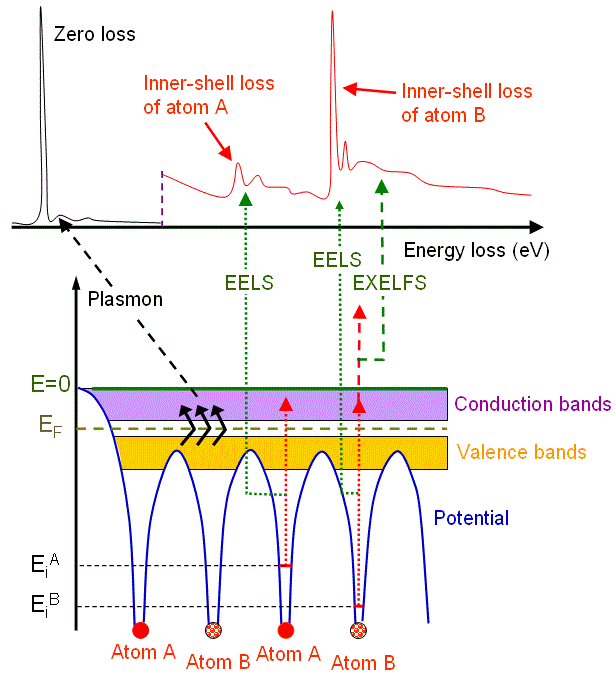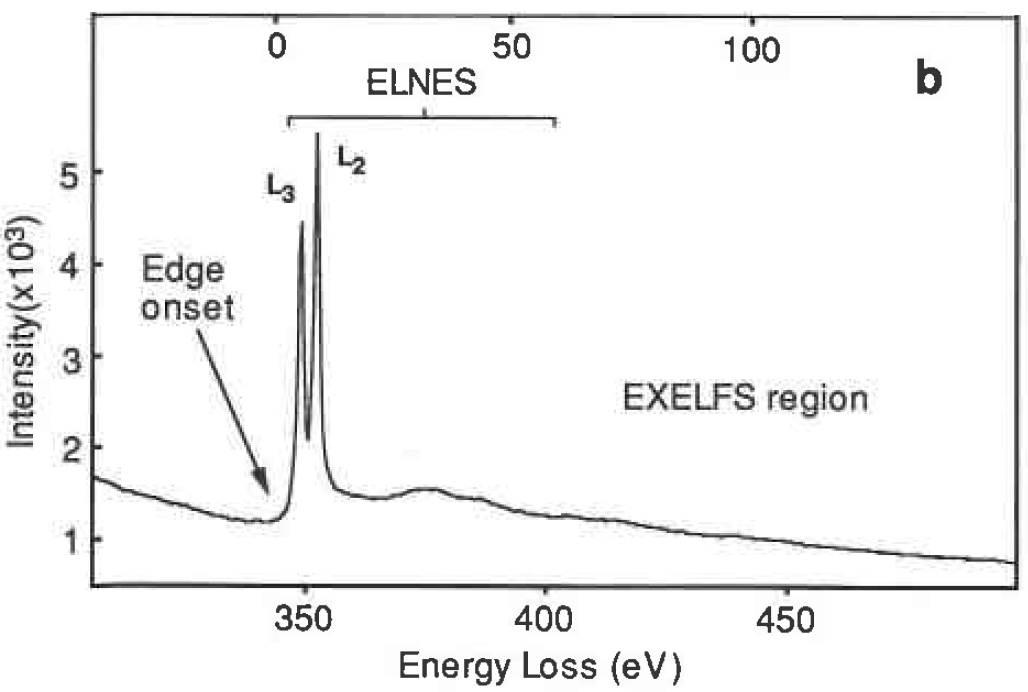=================================================================================
The EXELFS oscillations generally start at 40 - 50 eV above threshold and extend 200–300 eV above the ELNES region. The extended fine structure had not been applied
much in TEM for a couple of reasons:
i) The signal is very weak modulations of the EELS intensity;
ii) The TEM sample drift and damage cause difficulties to acquire data with adequate statistical precision in the time available;
iii) In any multicomponent material the range of EXELFS oscillations is limited by the appearance of
another inner-shell edge.
Figure 3405a shows the schematic illustration of an energy-loss spectrum and the formations of the main energy-loss peaks and EXELFS related to the energy levels of electrons surrounding atom A and atom B in materials.

Figure 3405a. Schematic illustration of an energy-loss spectrum and the formation of three main energy-loss peaks.
These oscillations for EXELFS are caused by ejected electrons with low kinetic energies behaving similarly to free electrons. The ejected electrons are backscattered by the surrounding atom shells, providing information on the coordination number and nearest neighbor distances. EXELFS, like EXAFS (extended X-ray absorption fine structure), is a unique technique for short range order (SRO) and atomic structure determination and offers the unique ability to obtain electronic structure at high spatial resolution.
Figure 3405b shows the EELS profile of Ca in mineral gaudefroyite (Ca4Mn3+2.5(BO3)3(CO3)O2.25(OH)0.75) exhibits two intense white-line features because of the Ca L2,3 core-loss edge, arising from transitions from the 2p core level. The EXELFS (extended energy loss fine structure) modulations are very weak and is only visible on the tail of the edge.

Figure 3405b. EELS profile of the Ca L2,3 core-loss edge, arising from
Ca elements in mineral gaudefroyite (Ca4Mn3+2.5(BO3)3(CO3)O2.25(OH)0.75).
In the energy region of more than 50 eV after the core edge in EELS, EXELFS with small intensity oscillations, due to diffraction effects from the atoms, may be detectable.
|
